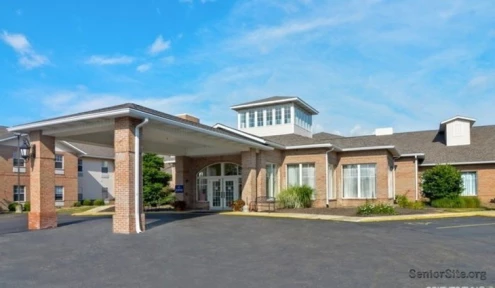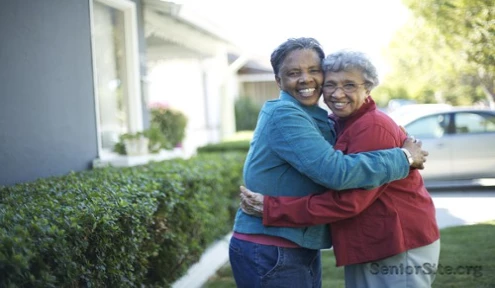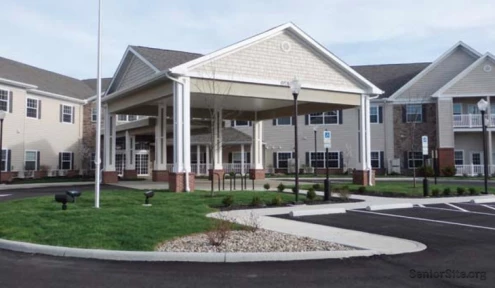More than 2,000 public and private senior citizen benefits programs exist nationwide, yet thousands of older Americans miss these resources each year. The primary reason? They simply don’t know these programs exist.
Seniors aged 60 and older qualify for numerous free government services that could significantly reduce their monthly expenses. The Senior Farmers Market Nutrition Program provides access to fresh produce, while Medicare Savings Programs offer healthcare coverage assistance. Medicare currently covers 80% of custom diabetic shoes and inserts for qualifying seniors. Meanwhile, the Older Americans Act funds free homemaking services for those needing help with daily tasks.
This guide examines these lesser-known benefits and explains how to claim them in 2025. From housing assistance to healthcare cost reduction and utility bill support, these programs can make substantial differences in seniors’ financial situations. Many of these benefits remain unclaimed simply because eligible seniors aren’t aware they qualify.
Government Free Services for Senior Citizens You Might Be Missing
Federal assistance programs remain unclaimed by thousands of eligible seniors each year. Many older Americans simply don’t know these programs exist, despite their potential to improve financial stability in 2025.
Medicare Savings Programs you may qualify for
Medicare Savings Programs (MSPs) cover Medicare costs for low-income seniors, yet less than half of eligible beneficiaries enroll in these state-run programs. These programs can reduce healthcare expenses by thousands of dollars annually.
The four MSP types offer different levels of assistance:
- Qualified Medicare Beneficiary (QMB): Pays Part A and B premiums, deductibles, and copayments for those with monthly income under $1,325 and resources under $9,660 in 2025
- Specified Low-Income Medicare Beneficiary (SLMB): Covers Part B premiums for individuals with monthly income under $1,585 and resources under $9,660
- Qualifying Individual (QI): Pays Part B premiums for those with monthly income under $1,781 and resources under $9,660
- Qualified Disabled Working Individual (QDWI): Helps with Part A premiums only
Enrolling in any MSP automatically qualifies seniors for Extra Help with prescription drugs, valued at approximately $6,200 annually.
Free food programs beyond SNAP
SNAP reached 5.3 million low-income households with seniors from 2018-2020, but only half of eligible older adults receive this benefit. Many seniors remain unaware of additional food assistance options.
Several alternatives provide nutritional support:
The Commodity Supplemental Food Program (CSFP) delivers monthly food packages at no cost to seniors 60+ with incomes at or below 185% of federal poverty guidelines. The Senior Farmers Market Nutrition Program (SFMNP) provides coupons for fresh produce at farmers markets, roadside stands, and community farms.
The Emergency Food Assistance Program (TEFAP) supports food banks and pantries with minimal eligibility requirements. For homebound seniors, the Home-Delivered Nutrition Program funds services like Meals on Wheels to provide free or low-cost meals.
Utility and energy bill help for low-income seniors
The Low Income Home Energy Assistance Program (LIHEAP) helps qualifying seniors pay heating and cooling bills. This federal program distributed $86 million in 2025 to low-income households.
The Weatherization Assistance Program (WAP) improves home energy efficiency, permanently reducing utility costs. Many states offer additional utility support through programs like the Comprehensive Energy Assistance Program (CEAP).
Some states provide emergency assistance to prevent utility disconnection. Seniors can contact the National Energy Assistance Referral project at 1-866-674-6327 or email [email protected] to find local programs.
Lesser-Known Health and Wellness Benefits for Seniors
Several specialized health benefits beyond standard Medicare coverage remain largely unknown to seniors in 2025. These programs can substantially reduce out-of-pocket medical expenses while improving access to necessary care.
Free therapeutic shoes for diabetics under Medicare
Medicare Part B offers diabetic seniors a benefit many fail to utilize. Qualifying patients receive therapeutic footwear each calendar year at minimal personal cost. The program covers one pair of custom-molded shoes with inserts or one pair of depth shoes, depending on the individual’s specific foot condition.
Medicare’s coverage extends beyond basic footwear to include:
- Two additional pairs of inserts yearly for custom-molded shoes
- Three pairs of inserts annually for depth shoes
- Shoe modifications as an alternative to inserts
Qualification requires both diabetes and at least one foot condition such as amputation, ulceration, calluses, neuropathy, poor circulation, or foot deformity. A diabetes doctor must certify the medical necessity, and a podiatrist or qualified physician must prescribe the footwear.
Patients pay just 20% of the Medicare-approved amount after meeting their Part B deductible, with Medicare covering the remaining 80%.
Home care and chore services through the Older Americans Act
The Older Americans Act (OAA) created a nationwide support network providing in-home services that many eligible seniors never claim. These programs help older adults maintain independence at home rather than requiring nursing facility placement.
Community Care for the Elderly (CCE) delivers essential support services including homemaking, personal care, emergency alert systems, and caregiver relief. Each program participant works with a dedicated case manager who assesses individual needs and coordinates appropriate assistance.
The Home Care for the Elderly (HCE) program provides basic subsidies (approximately $160 monthly) for living expenses along with special subsidies for medical supplies, home modifications, nutritional supplements, and home health aides.
Eligibility generally requires being at least 60 years old and meeting specific income guidelines. Programs typically prioritize frail elderly individuals who would otherwise require nursing home care.
Housing, Legal, and Tax Perks You Didn’t Know Existed
Housing costs and legal issues challenge many seniors today, yet numerous programs specifically address these needs. Several lesser-known housing and legal benefits could save older Americans thousands of dollars in 2025.
Subsidized senior housing through Section 202
The Section 202 Supportive Housing for the Elderly Program ranks as one of the federal government’s longest-running housing initiatives. These communities differ from general public housing by exclusively serving adults aged 62+ with very low incomes—typically below 50% of the area median income.
Section 202 housing promotes independent living while providing essential support services. These communities typically include:
- Accessible units with grab bars and emergency call systems
- Transportation services to medical appointments and shopping
- Social activities and community spaces
- On-site service coordinators who connect residents with community resources
Seniors can apply through their local Public Housing Authority or find Section 202 properties via HUD.gov. Due to high demand, applying to multiple properties and joining several waiting lists increases chances of placement.
Property tax relief programs for homeowners over 65
Most states offer significant property tax relief programs for senior homeowners, yet many eligible individuals never claim these benefits. These programs typically include:
- Homestead exemptions that reduce the assessed value of properties
- Circuit breaker programs providing tax credits when property taxes exceed a certain percentage of income
- Tax deferrals allowing seniors to postpone payments until property sale
Requirements vary by state and county but generally include age 65+, use of home as primary residence, and specific income thresholds.
Free legal aid for seniors facing eviction or benefit denial
While legal services often cost hundreds of dollars per hour, multiple organizations provide free assistance to seniors. The Legal Services Corporation funds programs nationwide that help with:
- Fighting evictions and foreclosures
- Appealing benefit denials for Medicare, Medicaid, or Social Security
- Creating advance directives and simple wills
- Addressing elder abuse or financial exploitation
The Senior Legal Hotlines program offers telephone advice in many states, while Area Agencies on Aging connect seniors to local legal resources.
Everyday Discounts and Financial Boosts for Seniors
Commercial discounts beyond government programs offer seniors additional ways to stretch retirement dollars. Many of these everyday savings opportunities remain hidden in plain sight while providing significant budget relief in 2025.
Senior travel and entertainment discounts
Travel discounts exclusively for seniors make retirement years more affordable for many older Americans. Airlines including American, Delta, and United provide fare reductions ranging from 5% to 50% off for travelers 65 and older. British Airways offers AARP members substantial savings—up to $200 off business class fares.
For ground transportation, Amtrak gives travelers 62+ a 10% discount, while major car rental companies like Avis, Budget, and Hertz offer senior discounts between 10-35% off base rates.
The America the Beautiful Senior Pass costs $20 annually or $80 for a lifetime pass, granting access to over 2,000 federal recreation sites. Seniors also receive discounted admission at institutions like the Metropolitan Museum of Art ($8 off) and the National Baseball Hall of Fame ($5 off).
How to use AARP and other memberships for savings
An AARP membership ($12-16 annually) unlocks numerous savings opportunities. Members receive up to 15% off at over 7,000 restaurants nationwide, up to 40% off movie tickets, and up to 30% off Cirque du Soleil shows.
AARP members potentially save:
- Up to $450 annually on dining alone
- Up to $100 onboard credit on select cruises
- $50 gift cards when booking flight packages
Theater programs like TDF’s Community Partners Program offer another option, providing Broadway tickets between $9-$47 even for popular shows.
Reverse mortgage options for income support
Reverse mortgages allow homeowners 62+ to convert home equity into cash without selling their property or making additional monthly payments. Unlike conventional loans, repayment isn’t required until the home is no longer used as a primary residence.
The most common type—Home Equity Conversion Mortgage (HECM)—comes with FHA insurance. During the application process, Social Security benefits count positively as stable income. Reverse mortgage proceeds typically don’t affect standard Social Security retirement benefits.
These financial instruments require caution—reverse mortgages can affect eligibility for means-tested programs like Supplemental Security Income. Mandatory counseling from a HUD-approved agent ensures seniors fully understand this complex financial tool before proceeding.
Conclusion
Thousands of eligible seniors miss valuable benefits simply because they don’t know these programs exist. Medicare Savings Programs could save qualifying individuals thousands of dollars annually on healthcare costs. Meanwhile, programs like Section 202 housing and SNAP deliver essential support for daily living expenses.
Eligibility requirements for these programs change yearly, making regular verification of qualification status important. Local Area Agencies on Aging provide free counseling services to help seniors navigate application processes. AARP membership offers additional savings opportunities across travel, dining, and entertainment categories.
These programs were specifically designed to help older Americans maintain independence and financial stability. Many seniors struggle with bills or forego necessary care despite qualifying for substantial assistance. Contacting the appropriate agencies to access these benefits can significantly improve quality of life while preserving retirement savings.
The underutilization of these programs represents a major gap between available resources and the seniors who need them most. With proper information and guidance, more older Americans can access the support they’re entitled to receive.
FAQs
Q1. What are Medicare Savings Programs and how can they benefit seniors? Medicare Savings Programs are state-run programs that help cover Medicare costs for seniors with limited income. There are four types of programs, each offering different benefits such as covering premiums, deductibles, and copayments. Enrolling in these programs can save seniors thousands of dollars annually on healthcare expenses.
Q2. Are there food assistance programs available for seniors besides SNAP? Yes, there are several food assistance programs available for seniors in addition to SNAP. These include the Commodity Supplemental Food Program (CSFP), which provides monthly food packages, the Senior Farmers Market Nutrition Program (SFMNP) offering coupons for fresh produce, and the Home-Delivered Nutrition Program that funds organizations like Meals on Wheels.
Q3. What housing support options are available for low-income seniors? Low-income seniors can benefit from the Section 202 Supportive Housing for the Elderly Program. This program provides subsidized housing exclusively designed for adults aged 62+ with very low incomes. These communities often include accessible units, transportation services, social activities, and on-site service coordinators to promote independent living.
Q4. How can seniors save money on travel and entertainment? Seniors can take advantage of numerous travel and entertainment discounts. Many airlines, car rental companies, and attractions offer reduced rates for older adults. The America the Beautiful Senior Pass provides access to federal recreation sites at a discounted rate. Additionally, AARP membership unlocks savings on dining, movie tickets, and various entertainment options.
Q5. What is a reverse mortgage and how can it support senior income? A reverse mortgage is a financial tool that allows homeowners aged 62 and older to convert their home equity into cash without selling the property or making additional monthly payments. The most common type is the Home Equity Conversion Mortgage (HECM), which is FHA-insured. While it can provide income support, it’s important to understand the terms and potential impacts on other benefits before considering this option.












